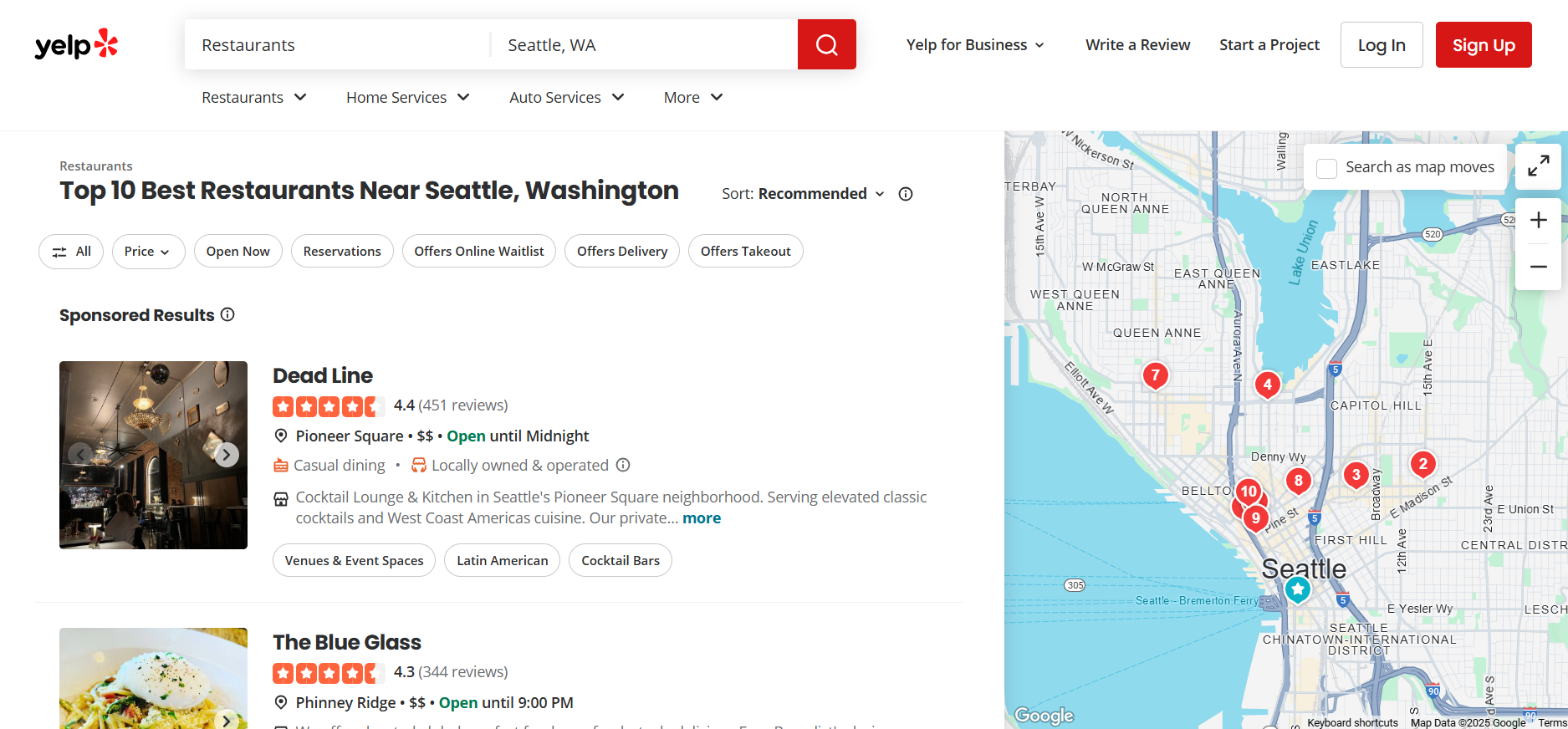If you’ve thought of a good phrase or slogan for your business, you should consider protecting that catchphrase with a trademark.
Phrases can make it easy for people to identify your business, along with its products or services. As long as you follow the right steps, securing a trademark for your phrase won’t be that difficult.
Online Legal Services for Registering Trademarks
- Rocket Lawyer – Best for most
- Bizee (formerly Incfile) – Best for business formation
- LegalZoom – Best for flat fees and versatility
- UpCounsel – Best for complex legal needs
- Avvo – Best for free legal advice
- LegalMatch – Best for locating an attorney near you
If you want help trademarking a phrase, you can use an online legal service. Online legal services provide step-by-step instructions and guidance to make the trademark registration process easy.
Why Trademarking a Phrase is Worth It
Distinctive phrases and slogans can drastically improve your brand strategy. Think of phrases like “just do it,” “where’s the beef?,” or “melts in your mouth, not your hands”—you immediately associate these slogans with a business (Nike, Wendy’s, and M&Ms). That’s the power of a trademarked phrase or slogan.
These businesses have turned simple phrases into memorable brand associations. Nike could put “just do it” on a billboard or a commercial without any logos or branding, and everyone would recognize the advertisement. That’s a dream scenario for any business.
When you think of something really clever or catchy to promote your business, people remember it. In many cases, a trademark can even mirror a company’s pitch or unique selling point. Just look at the timeless slogan trademarked by Wheaties: “the breakfast of champions.”
It’s also worth it to trademark a phrase because you can prevent other businesses from claiming the rights to use it. But without a trademark, anyone else can use your phrase and benefit from your creativity.
If you want to create iconic branding like the examples mentioned above, it all starts with the trademark.
The Investment Needed to Trademark a Phrase
Trademarking a phrase is not an overnight process. It takes some time and money to achieve the legal protections associated with a valid trademark.
First, you need to come up with the phrase and verify that it meets the eligibility for a trademark. This could be fast for some of you but take longer for others if you discover the phrase can’t be trademarked or someone else is already using it. While brainstorming new ideas is free, it could take weeks to come up with something that’s worth a trademark.
Once you’re ready to proceed and file an application, the process can take anywhere from six to 18 months. If you’re filing an application directly with the USPTO (the United States Patent and Trademark Office), the initial application fee is either $250 or $350, depending on the filing basis you select.
There are additional fees imposed by the USPTO for the use of the trademark after five years and renewing the trademark every ten years. These fees range from $200 to $500, depending on when you file and your trademark class.
To simplify things, you can use an online legal service like LegalZoom to trademark your phrase. LegalZoom offers two trademark service packages, for $249 and $599, plus federal filing fees. The $599 plan comes with an attorney consultation that helps ensure the process goes smoothly and the application gets approved as quickly as possible.
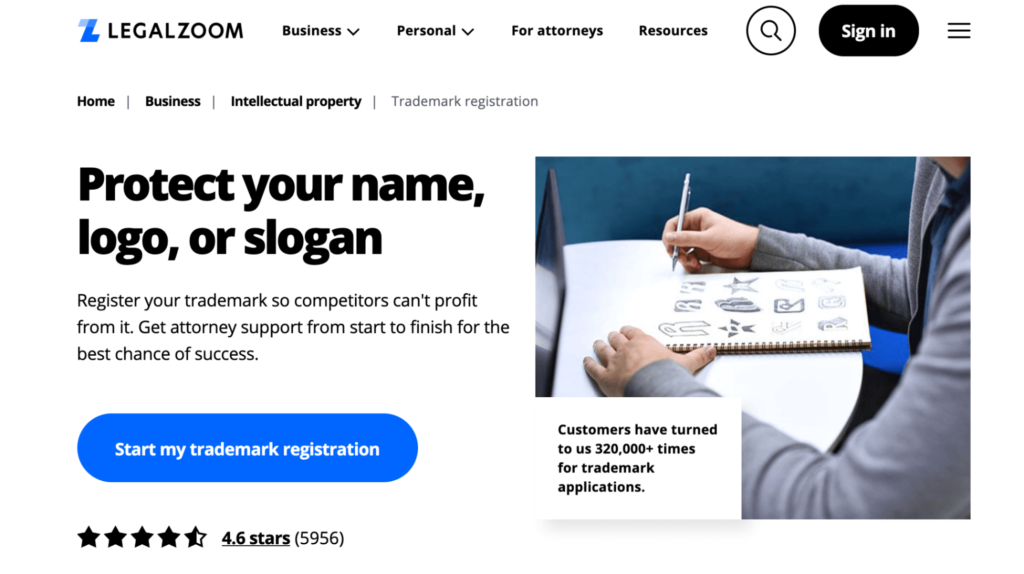
6 Steps to Trademark a Phrase
Here’s a simple step-by-step guide to trademark a phrase. This is the fastest and easiest way to get your phrase, slogan, or tagline trademarked.
Step 1 – Come Up With an Original and Unique Phrase
The first thing you need to do is think of the phrase you want to trademark. Some of you might already have an idea in mind, but you can’t skip over this step just yet.
That’s because not every phrase can be trademarked, and not everyone can trademark a phrase. You need to verify that the slogan, tagline, or phrase you want to trademark meets all federal trademark rules.
Here are some factors to consider as you’re going through this step:
- Phrases can only be trademarked if the use is for commercial purposes, meaning the phrase is connected to selling goods or services. A person can’t trademark a phrase just because they like it—the phrase must be tied to a business.
- Trademarked phrases are only protected against the use of others in the same business class.
- The phrase must identify the commercial organization as the source of goods or services for the trademark.
- You cannot apply to trademark a phrase if the same phrase is already registered or has a pending application.
- The phrase cannot be too similar or easily confused with an existing trademark or a phrase in a pending application.
- You cannot trademark a phrase that is generic or simply descriptive. Trademarked phrases must be distinctive.
- You cannot trademark a phrase that includes common terms used in your business or industry.
- Phrases considered part of everyday speech cannot be trademarked (example: “as a matter of fact”).
Some other unique considerations could lead to the approval or rejection of your trademark application. For example, a computer and software company like Apple could use the word “apple” in its trademark. But a business that sells apples would be unable to use this word in a trademarked phrase.
Step 2 – Make Sure Nobody Else is Using the Phrase
After you’ve narrowed down the phrase you want to trademark, you need to verify that the phrase isn’t already in use.
You can do this for free using the USPTO Trademark Electronic Search System (TESS).
This process isn’t necessarily bulletproof. It’s your responsibility to ensure the trademark search meets all of the criteria. There are also several different databases to browse, making things a little more challenging as you go through the process.
Alternatively, you can use LegalZoom’s comprehensive trademark search service to make sure the phrase is available.

The service has been used for more than 50,000+ trademark searches. It only takes about 15 minutes to complete, and it helps ensure your application won’t have a conflict when you apply.
LegalZoom has three different trademark search services to choose from:
- Federal search — $199
- Federal, state, and common law search — $299
- WorldScan international search — $499
While this is an added cost to your overall investment, it’s worth it when you consider how much time and money you’ll save in the long run. Without a comprehensive trademark search, you might end up applying for a trademark either already in use or too similar to a pending application. Six months from now, you could get a rejection letter and have to start over from scratch.
These services are ideal for those of you who want to apply for a trademarked phrase on your own. But if you’re going to use a trademark registration service, there’s a better value option to consider.
LegalZoom’s $599 trademark registration service comes with attorney assistance. A lawyer will research the phrase for you and ensure it’s not already in use before filing. If the attorney thinks there might be an issue with your phrase, you’ll get a free trademark search for your second option.
This service also comes with the LegalZoom guarantee. If the application gets rejected, they’ll cover the $599 fee to register another phrase.
Step 3 – Choose the Appropriate Class and Filing-Bases For the Trademark
There are 45 different classes or categories to cover businesses in every industry. Classes 1-34 are for goods, and 35-45 designate services.
For example, class 14 covers jewelry, and class 36 is for insurance and financial businesses. Here’s a quick overview of those options from the United States Patent and Trademark Office:
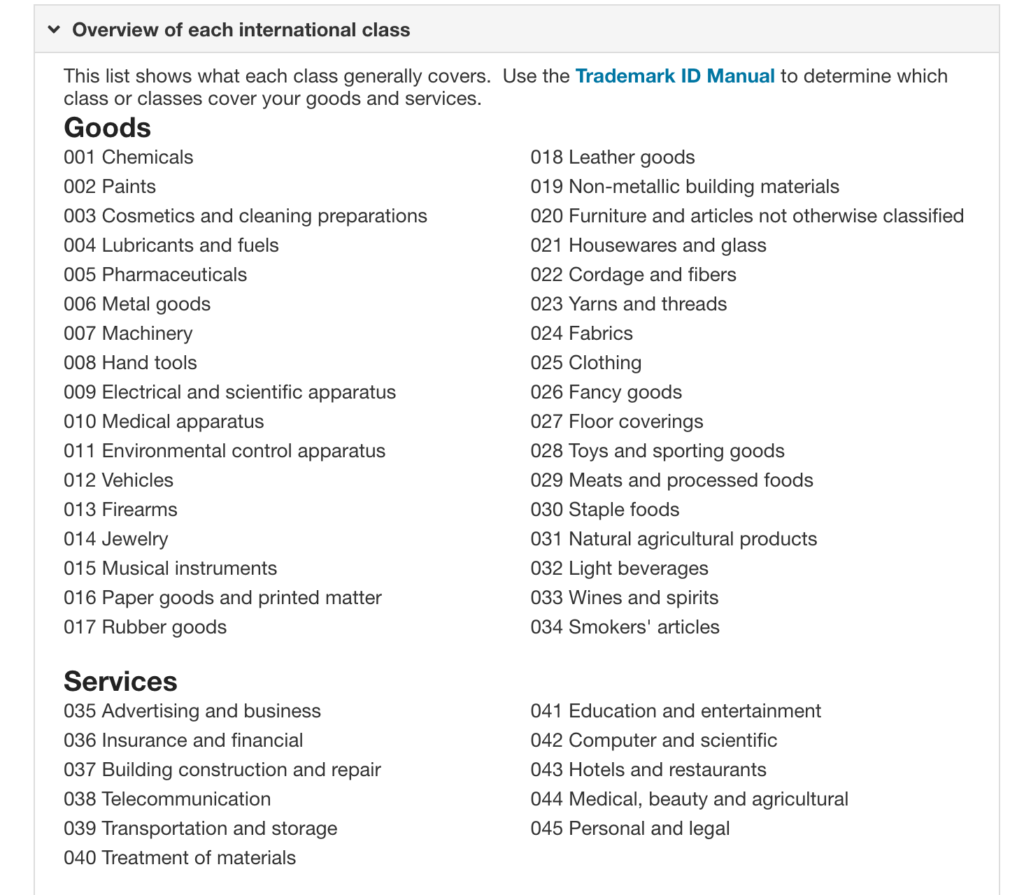
You need to choose a class that’s the closest fit to your business, industry, and what you will use the trademark for. This is really important when it comes to defending your trademarked phrase.
The trademark only protects you against businesses in the same class. There are some exceptions if you can prove that the use negatively impacts your business.
In addition to the class, you also need to designate a filing basis for your application. This is essentially the grounds for why you’re trying to obtain protection rights for the phrase.
All trademarks must have a filing basis. Here’s a quick overview of your options and the restrictions:
- Use in Commerce Basis — You’ve already used the phrase in connection with selling goods or services with interstate commerce. This only applies to authentic commerce, meaning selling one item to a friend or family member in your state doesn’t satisfy the requirements.
- Intent-to-Use Basis — You haven’t used the phrase to sell goods or services in interstate commerce, but you have the intent to do so in the future. In this scenario, you’d need to file a statement of use within six months of approval, along with proof that the phrase is being used. Alternatively, you could file a petition to extend.
- Foreign Registration Basis — You can apply for a US trademark application if the trademark office in another country has already approved your phrase. This is only viable if the phrase will be used for the same goods or services as the foreign trademark.
- Foreign Application Basis — You’ve applied for a trademark in a foreign country within the past six months but haven’t been registered yet. This class is commonly known as “foreign priority basis” because applicants apply for a priority filing date based on the original foreign application, not the date of filing for the US trademark application.
If all of this seems a bit too confusing for you, then it’s just another reason why you should use a trademark registration service for assistance. Even LegalZoom’s DIY plan will walk you through a series of questions to ensure your class, and filing basis on the application fit the appropriate criteria.
Step 4 – Consult With an Attorney
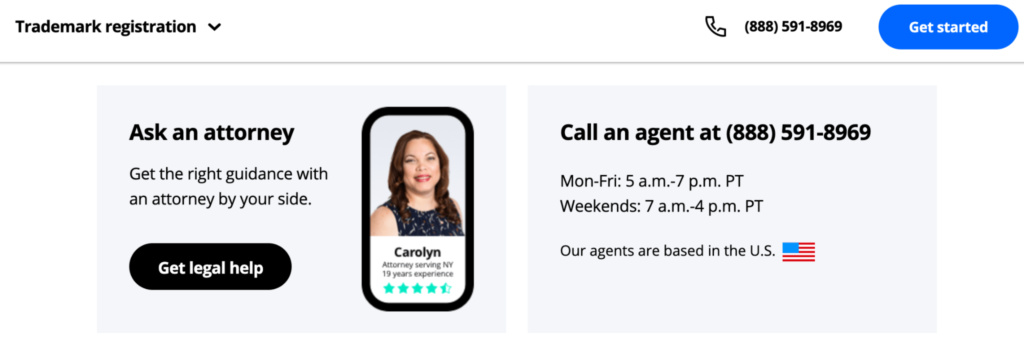
Trademarks offer legal protection to businesses. While you can technically apply for one on your own, it’s always in your best interest to consult with an attorney whenever you’re going through something like this.
Consulting with an attorney can help make sure that your application gets approved upon the first submission. Your lawyer will also help ensure that the trademarked phrase is actually defendable if someone else uses it.
An attorney can potentially steer you away from phrases too similar to those used by other businesses, potentially helping you avoid a lawsuit.
LegalZoom’s attorney-assisted trademark registration service gives you a 94% chance of getting your phrase approved. This percentage drops significantly if you do it on your own.
Step 5 – Submit a Trademark Application
Finally, it’s time to submit the application for the phrase you want to trademark. You can do this using the Trademark Electronic Application System (TEAS) from the USPTO.
You’ll need to create an account on the USPTO website to continue.
Again, you can do all of this on your own. But we strongly recommend using a service for assistance. This will help you avoid application mistakes that can ultimately lead to delays and rejections.
The cool part about LegalZoom is that they’ll complete the paperwork and file the application on your behalf. This saves you time, money, and headaches.
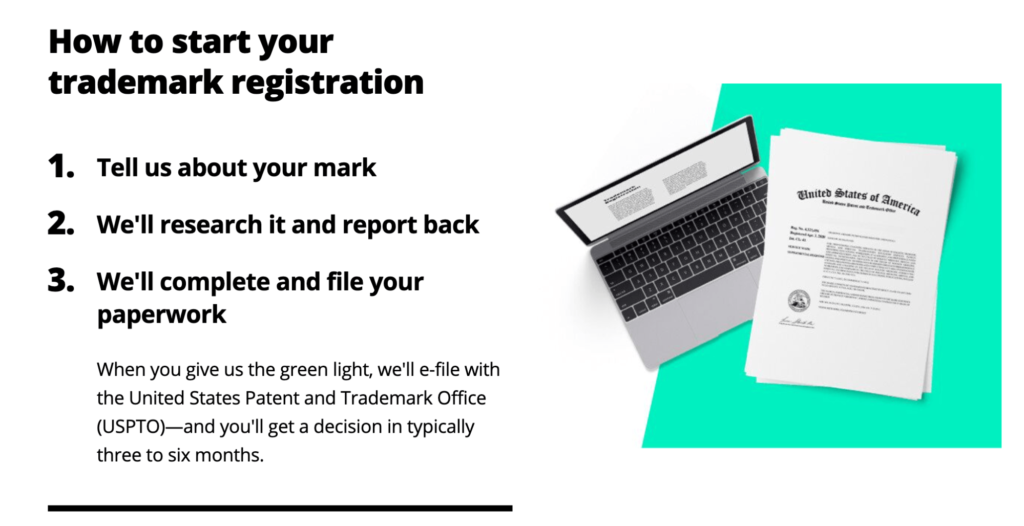
Step 6 – Wait
Regardless of how you filed your application, the final step is a waiting game.
All applications are reviewed by an attorney from the United States Patent and Trademark Office. The attorney will ultimately approve the phrase, reject the phrase, or send you a letter asking for more information.
In some instances, additional paperwork will be required. Examples include:
- Response forms
- Intent-to-use forms
- Post-approval and post-notice of allowance (NOA) amendment forms
- Correspondence and attorney/domestic representative forms
- Petition forms
- Miscellaneous forms
For a complete list and an explanation of the forms, visit this resource from the USPTO.
You could be waiting for six to 18 months before you get an answer. So be patient during this process.
Next Steps
Once your trademark has been approved, it’s your responsibility to protect it. No police or government agency is actively going around looking for violations.
You’ll also need to use your trademarked phrase in order to maintain it. If you’re not using it within a designated period of time, the trademark might become void, and you’ll have to start the process over from scratch.
Remember, trademarking a phrase is the first step to a long-term branding strategy. Review our in-depth guide on how to build a brand for more information on this subject.

